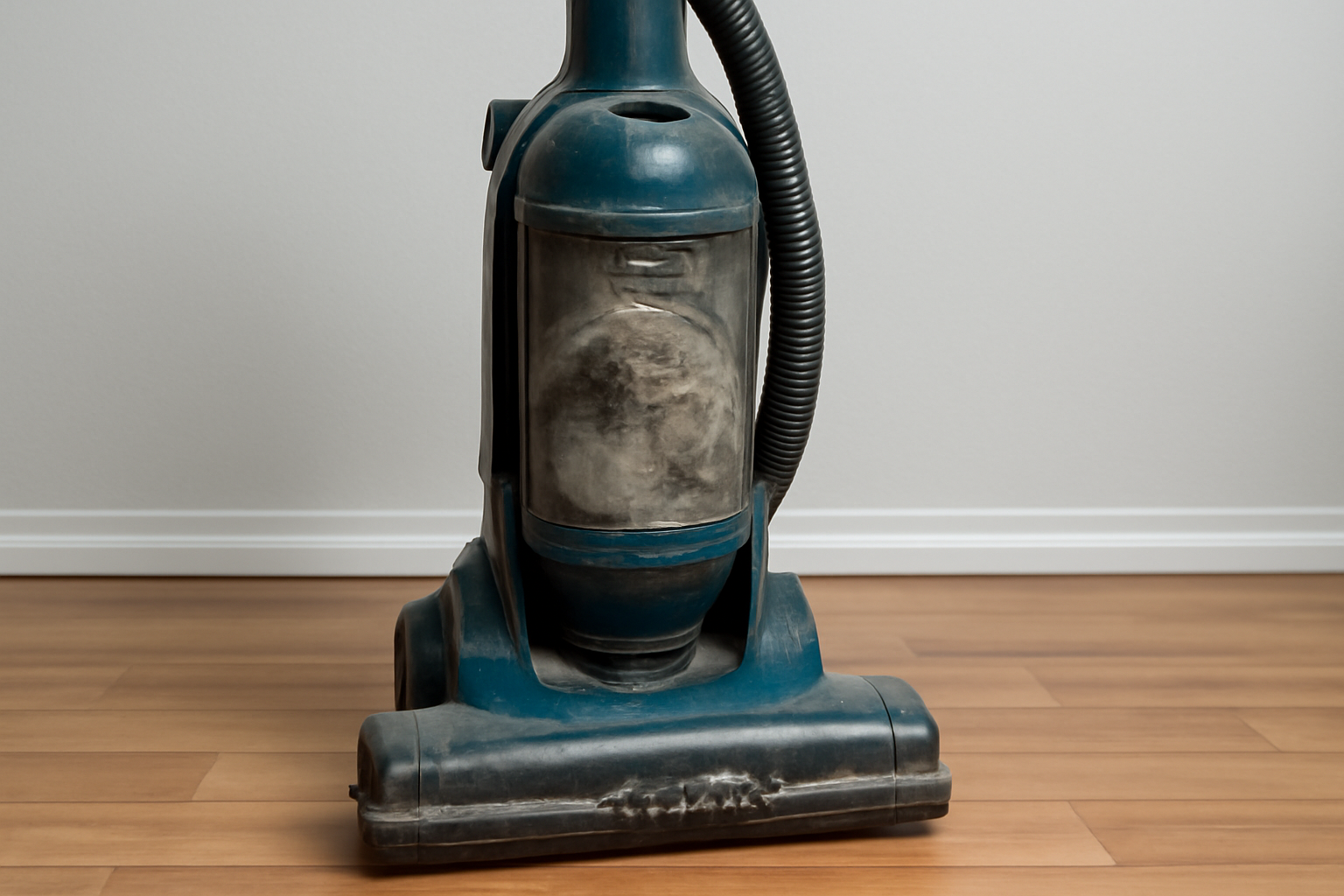
Even the best vacuum cleaners on the European market aren’t immune to user complaints. Whether it’s weak suction, short battery life, loud noise, or constant filter maintenance, most issues come down to design flaws, poor materials, or lack of user education. For European importers and distributors, understanding these problems—and how to fix them—can turn customer frustration into long-term loyalty.
This article serves as a technical and practical guide for B2B professionals engaged in vacuums procurement and vacuum cleaner distribution. By learning how to identify, solve, and prevent common vacuum complaints, you’ll improve customer satisfaction, reduce returns, and strengthen your brand reputation.
💨 1. Weak Suction Power – The Most Frequent Complaint
Loss of suction power is the single most common user complaint. It’s usually caused by blocked filters, air leaks, or poor cyclone design.
Root Causes:
Dust filters clogged with fine particles
Air leaks in hose or dust container seals
Overfilled dust bins reducing airflow
Poorly engineered airflow path
Solutions:
Choose models with multi-cyclone dust separation systems.
Ensure Wet Dry Vacuum Cleaners use high-efficiency airflow channels.
Recommend regular filter cleaning and timely replacement.
Request suppliers to test suction efficiency using IEC 62885 standards.
For importers, this means prioritizing vacuum designs that maintain stable suction even after long-term use. Stable performance equals fewer complaints and higher resale value.
🧱 2. Filter Blockage and Maintenance Headaches
Consumers often underestimate the importance of filter care. In most warranty cases, blockages are the true cause—not motor defects.
High-quality HEPA Filter Vacuum Cleaner models should feature easy-access filters and self-cleaning options.
Best Practices for Procurement Teams:
Choose washable filters with high air permeability.
Request a demonstration of filter replacement procedures during sampling.
Educate distributors and end-users with visual maintenance guides.
Ask suppliers for tested filter lifespan data (in hours or cleaning cycles).
By reducing maintenance complexity, you not only improve customer satisfaction but also reduce after-sales costs significantly.
🔊 3. Excessive Noise – A Hidden Brand Killer
Noise complaints may seem minor, but they often determine whether a product feels “premium.” Many budget models use unbalanced motors or low-grade bearings, causing unpleasant vibration and sound.
Engineering Solutions:
Select Wet and Dry Vacuum Cleaner units with acoustic insulation or dual-chamber housing.
Use brushless motors and precision-balanced impellers.
Verify compliance with EU noise standards (<78 dB).
Offer silent models as premium upsell products.
Noise reduction isn’t just user comfort—it’s brand differentiation. Quiet vacuums are perceived as better-engineered and command higher margins.
🔋 4. Battery and Runtime Issues in Cordless Models
Wireless models are trending fast, but poor battery life is a major complaint. Many Cordless Handheld Vacuum Cleaner units on the market fail to deliver advertised runtime.
Why It Happens:
Inconsistent battery cell quality
Overheating due to inefficient current control
Poor charging circuit design
Weak airflow balance causing motor strain
Solutions:
Source from suppliers that use certified lithium battery cells (UL, CE).
Request technical data sheets for battery discharge curves.
Ensure PCBA includes thermal protection and automatic cut-off.
Offer replaceable battery modules for commercial use.
For distributors, offering transparency on real battery runtime builds trust and reduces refund requests.
🧩 5. Structural and Material Failures
From cracked dust bins to broken hoses, mechanical issues often stem from weak material selection or poor injection molding. European climates (cold winters, dry indoor air) can worsen plastic brittleness.
Procurement Tips:
Insist on PC+ABS or impact-resistant polymers.
Check samples for joint tolerances and screw strength.
Avoid over-polished housings that sacrifice durability for aesthetics.
Audit suppliers’ quality control standards (ISO 9001, IATF 16949).
Investing in durable materials drastically reduces warranty claims and enhances user trust—especially for B2B distribution networks.
⚡ 6. Poor After-Sales Service and Parts Availability
Even the best vacuum will face wear and tear. However, many distributors overlook after-sales logistics when selecting OEM partners. Missing spare parts or slow replacements can turn minor issues into reputation disasters.
Best Solutions:
Collaborate with suppliers offering modular design and replaceable components.
Keep essential spares (filters, hoses, brushes) in local stock.
Build an online portal for service manuals and parts ordering.
Encourage end-users to register products for extended warranties.
Efficient service support transforms a complaint into a trust-building opportunity.
🧠 7. Turning Complaints into Procurement Strategy
The best European importers don’t just solve problems—they anticipate them. By collecting feedback from retailers and users, they refine sourcing strategies and improve model selection.
Practical Steps:
Use complaint data to score suppliers annually.
Offer “technical upgrade suggestions” to factories.
Reward suppliers with the lowest complaint ratios.
Include customer service KPIs in supply contracts.
A proactive approach reduces long-term risks and helps your brand stand out in a saturated market.
🚀 Conclusion: Complaints Are Opportunities for Improvement
User complaints are not just problems—they are insights. Each issue, from suction loss to noise control, reveals where design, materials, or manufacturing can improve.
By addressing these pain points systematically, importers and distributors strengthen their vacuum cleaner distribution ecosystem. Reliable, quiet, and user-friendly vacuums translate directly to brand loyalty and repeat orders.
Smart buyers use complaints not as setbacks but as data for continuous improvement—and that’s how the most successful companies in the vacuum industry stay ahead.
📌 Hashtags (Lanxstar Related 50 Tags)
Lanxstar, VacuumCleaner, SmartVacuum, CordlessVacuum, WetDryVacuum, PortableVacuum, SelfCleaningVacuum, EnergyEfficientVacuum, HEPAVacuum, VacuumTechnology, VacuumParts, SuctionPower, AirflowDesign, CycloneSystem, DustCollector, NoiseControl, EcoFriendlyVacuum, EUStandards, CECertified, VacuumMotor, Procurement, Distribution, B2BVacuum, OEMVacuum, ODMVacuum, CommercialVacuum, HouseholdVacuum, IndustrialVacuum, VacuumInnovation, SmartCleaning, VacuumEngineering, BatteryTechnology, DustSeparation, FiltrationSystem, PortableCleaner, VacuumAccessories, HomeAppliance, ApplianceSupplier, VacuumManufacturing, VacuumTesting, QualityControl, LanxstarBrand, VacuumExport, VacuumImport, EUImporter, VacuumSupplier, VacuumMarket, VacuumSales, VacuumDesign, SustainableCleaning, ProfessionalVacuum, EuropeanVacuumIndustry
















